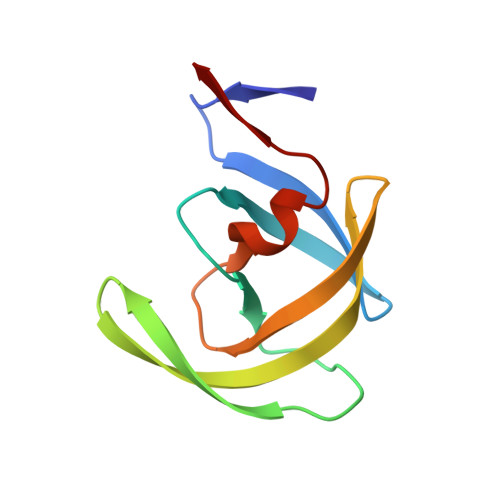Counteracting HIV-1 protease drug resistance: structural analysis of mutant proteases complexed with XV638 and SD146, cyclic urea amides with broad specificities.
Ala, P.J., Huston, E.E., Klabe, R.M., Jadhav, P.K., Lam, P.Y., Chang, C.H.(1998) Biochemistry 37: 15042-15049
- PubMed: 9790666
- DOI: https://doi.org/10.1021/bi980386e
- Primary Citation of Related Structures:
1BV7, 1BV9, 1BWA, 1BWB - PubMed Abstract:
The long-term therapeutic benefit of HIV antiretroviral therapy is still threatened by drug-resistant variants. Mutations in the S1 subsite of the protease are the primary cause for the loss of sensitivity toward many HIV protease inhibitors, including our first-generation cyclic urea-based inhibitors DMP323 and DMP450. We now report the structures of the three active-site mutant proteases V82F, I84V, and V82F/I84V in complex with XV638 and SD146, two P2 analogues of DMP323 that are 8-fold more potent against the wild type and are able to inhibit a broad panel of drug-resistant variants [Jadhav, P. K., et al. (1997) J. Med. Chem. 40, 181-191]. The increased efficacy of XV638 and SD146 is due primarily to an increase in P2-S2 interactions: 30-40% more van der Waals contacts and two to four additional hydrogen bonds. Furthermore, because these new interactions do not perturb other subsites in the protease, it appears that the large complementary surface areas of their P2 substituents compensate for the loss of P1-S1 interactions and reduce the probability of selecting for drug-resistant variants.
- Experimental Station, DuPont Pharmaceuticals, Wilmington, Delaware 19880, USA.
Organizational Affiliation:

















